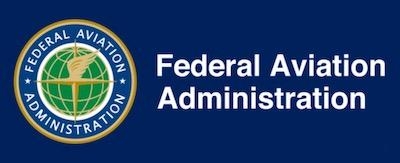Shows That Air Travel In The United States Is Strong
All safety, efficiency and economic indicators show that air travel in the United States is strong, according to the FAA Aerospace Forecast Fiscal Years (FY) 2019-2039. With aircraft operations expected to increase more than 25 percent over the next 20 years, the FAA is advancing major airspace modernization and infrastructure improvements to meet this tremendous projected growth.

The FAA forecasts U.S. airline enplanements (passengers) will increase from 743.9 million in 2017 to 780.8 million in 2018, a 5.0 percent increase. Enplanements for domestic mainline carriers, which primarily use aircraft with 90 or more seats, increased 5.4 percent while domestic enplanements for regional carriers, which primarily use aircraft with 89 or less seats, increased 3.4 percent. International enplanements are expected to increase from 9.6 million in 2017 to 99.6 million in 2018, a 2.8 percent increase. Mainline carrier international enplanements were up 2.9 percent while regional international enplanements decreased 1.8 percent.
Revenue passenger miles (RPMs) are the industry standard for measuring air travel demand. An RPM represents one revenue passenger traveling one mile. Domestic RPMs increased from 683.6 billion in 2017 to 720.2 billion in 2018, a 5.4 percent increase. Domestic mainline carrier RPMs increased 5.5 percent while domestic regional carrier RPMs increased 4.4 percent. International RPMs by U.S. carriers increased from 271.3 billion in 2017 to 280.6 billion in 2018, a 3.4 percent increase. Total system RPMs increased from 954.8 billion in 2017 to 1.00 trillion in 2018, a 4.8 percent increase. Total mainline carrier RPMs increased by 4.9 percent, while total regional carrier RPMs increased by 4.0 percent.

Underscoring this point, the FAA forecasts total operations (landings and take-offs) at air traffic control towers to increase from 51.8 million in 2018, at an average annual rate of 0.9 percent during the forecast period, reaching 62.0 million 2039.
The Department of Transportation (DOT) and the FAA are planning to meet this growth in air travel with robust infrastructure investments through the Airport Improvement Program. Satellite-based, air traffic modernization technologies and procedures being deployed by the FAA are enhancing safety while improving efficiency in the nation’s airspace system.
The forecast also highlights the phenomenal growth of Unmanned Aircraft Systems (UAS), often referred to as drones. The FAA projects the small model UAS fleet to grow from 1.2 million vehicles in 2018 to 1.4 million in 2023, an average annual growth rate of 2.2 percent. The commercial, small non-model UAS fleet is forecast to nearly triple from 277,386 in 2018 to 835,211 in 2023, an average annual growth rate of 24.7 percent.
In addition to UAS, another rapidly growing aerospace field is commercial space transportation. The FAA, which licenses and regulation this industry, projects that commercial space launch and re-entry operations will increase from 35 in 2018 to an estimated 56 in 2021.
The FAA aerospace forecast is the industry-wide standard of measurement of U.S. aviation-related activities. The agency uses data, trends and other factors to develop the forecast, including generally accepted economic projections, surveys and information sent by the airlines to the DOT. Additionally, the scope of the report looks at all facets of aviation including commercial air travel, air cargo and private general aviation.
(Source: FAA news release. Image from file)
 ANN's Daily Aero-Term (04.20.24): Light Gun
ANN's Daily Aero-Term (04.20.24): Light Gun Aero-News: Quote of the Day (04.20.24)
Aero-News: Quote of the Day (04.20.24) ANN's Daily Aero-Linx (04.21.24)
ANN's Daily Aero-Linx (04.21.24) Aero-News: Quote of the Day (04.21.24)
Aero-News: Quote of the Day (04.21.24) ANN's Daily Aero-Term (04.21.24): Aircraft Conflict
ANN's Daily Aero-Term (04.21.24): Aircraft Conflict




